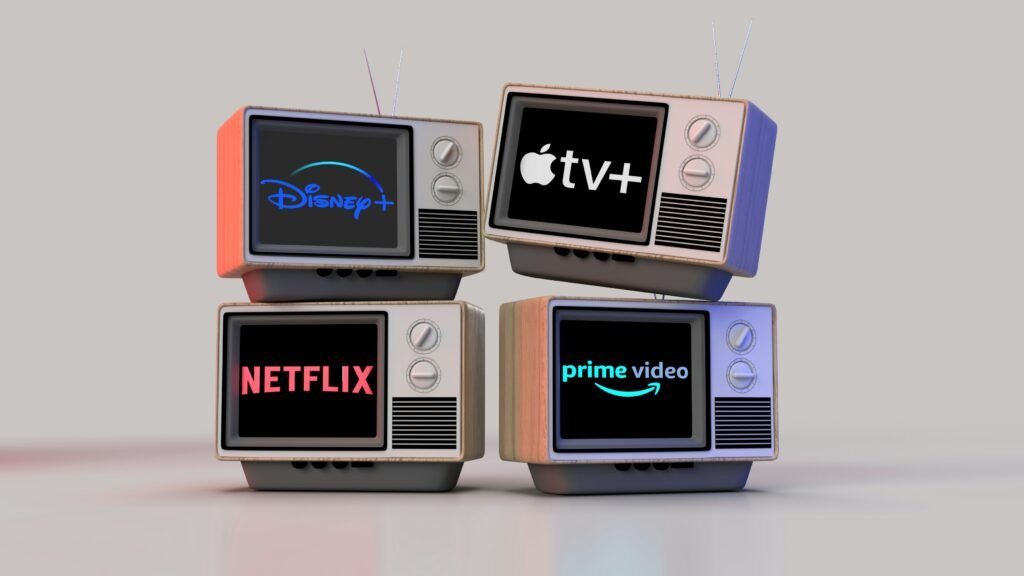
Tablo 4th Gen DVR Review
Introduction to Tablo 4th Gen DVR
In the evolving landscape of television viewing, the Tablo 4th Generation DVR stands out as a pivotal tool for those pursuing a cord-cutting lifestyle. With an increasing number of consumers opting for streaming services instead of traditional cable subscriptions, the shift in viewing habits is evident. The traditional methods of consuming content are being challenged by innovative technologies that prioritize flexibility, accessibility, and user control. This shift has led to a surge in demand for devices that allow seamless integration of over-the-air broadcasting with modern streaming platforms.
The Tablo 4th Gen DVR emerges as a solution tailored for this new age of viewing. It caters to avid television watchers who wish to maintain access to live TV and recordings without the constraints of a cable contract. Unlike conventional DVRs that are often tied to a specific service provider, the Tablo 4th Gen offers the ability to record free over-the-air signals from local stations, providing an extensive selection of channels without monthly fees. This feature not only empowers users to curate their viewing experience but also significantly reduces costs typically associated with cable subscriptions.
In terms of functionality, the Tablo 4th Gen is equipped with advanced features that enhance usability. It supports high-definition recording capabilities, showcasing the commitment to quality that modern viewers demand. Moreover, the device integrates seamlessly with various streaming services, allowing users to gather all their favorite content in one place. This multifunctionality serves to simplify the user experience while delivering high-quality programming. As we delve deeper into the Tablo 4th Gen DVR in the forthcoming sections, we will explore its specifications, benefits, and potential challenges in the context of the rapidly changing television industry.
Setting Up Your Tablo 4th Gen DVR
Setting up your Tablo 4th Generation DVR is a straightforward process that requires a few essential steps to ensure optimal performance. The initial phase involves gathering the necessary hardware components. You will need the Tablo device itself, a compatible over-the-air (OTA) antenna, an external USB hard drive for storage, and a stable internet connection. Begin by connecting the OTA antenna to the DVR’s antenna input. This setup allows the device to receive broadcast signals from local television stations.
Next, connect the USB hard drive to one of the available USB ports on the Tablo device. This external storage unit is crucial for recording programs and storing content efficiently. Once all hardware connections are established, power on the Tablo 4th Gen DVR and connect it to your home network using an Ethernet cable for a stable connection. Alternatively, you can set up Wi-Fi connectivity by following the on-screen instructions.
After establishing network connectivity, you will need to download and install the Tablo app on your smart device or compatible streaming device. The Tablo app will guide you through the initial software setup process. Follow the prompts to create an account and configure your DVR settings. It is recommended to run a channel scan to identify all available OTA channels in your area, as this will determine which programs can be recorded.
If you encounter any issues during the setup process, refer to the user manual or the Tablo support website for troubleshooting tips. Common concerns include poor signal reception or software installation errors, which can often be resolved by adjusting the antenna position or restarting the device. Understanding these basic installation steps will help ensure a smooth experience with your Tablo 4th Gen DVR, allowing you to enjoy its full potential without unnecessary complications.
User Interface and Experience
The user interface of the Tablo 4th Gen DVR is designed with a modern aesthetic that emphasizes simplicity and functionality. Upon launching the application, users are greeted with a clean layout that facilitates easy navigation, ensuring that even those who may not be tech-savvy can access their desired content effortlessly. The main dashboard prominently features a variety of content options, making it straightforward for users to identify live TV, recorded shows, and different sources.
Ease of navigation is a strong point of the Tablo 4th Gen DVR. Users can seamlessly toggle between various sections using an intuitive menu system that allows for quick access to both live and recorded programming. The search functionality is notably responsive, enabling users to quickly find specific shows, movies, or channels. It employs a robust filtering system that guarantees that users have an efficient means of sifting through content, tailored to their preferences.
<puser 4th="" a="" ability="" and="" appreciate="" as="" commitment="" content,="" contributes="" data="" design="" during="" dvr="" dvr’s="" effortlessly="" enhancing="" enjoyable="" episodes.="" even="" experience="" experience.="" feedback="" functionality.
In conclusion, the user interface of the Tablo 4th Gen DVR stands out for its thoughtful design and user-centric approach. By prioritizing ease of use and responsiveness, Tablo ensures that its users have a smooth and enjoyable experience while navigating through their entertainment options.
Recording Capabilities and Storage Options
The Tablo 4th Gen DVR presents commendable recording capabilities that cater to the needs of cord-cutters. One of its notable features is the ability to record up to four shows simultaneously, which is particularly beneficial for households with diverse viewing preferences. This multi-channel recording function ensures that families can access their favorite programs without conflicts, providing a seamless experience for sports events, series episodes, and live broadcasts alike.
Regarding the quality of recordings, users can expect high-definition output (up to 1080p), ensuring that the viewing experience is on par with traditional cable services. Additionally, recordings can easily be accessed and managed through the intuitive Tablo interface, providing a user-friendly approach to navigating recorded content. With the ability to pause and rewind live television, the Tablo 4th Gen DVR enhances the overall user experience.
When it comes to storage options, users have the flexibility to either utilize external hard drives or cloud storage solutions. The DVR itself does not come with built-in storage but allows users to connect an external USB hard drive, thus providing significant storage capacity depending on the size of the drive chosen. This option is typically cost-effective and offers fast access to recorded content without relying on internet speeds. Alternatively, cloud storage options provide an increasingly popular method for managing recordings. This can be advantageous for users who prefer not to deal with physical storage devices, but they need to consider potential monthly fees and internet bandwidth requirements.
However, users should be aware of certain limitations. For instance, while external hard drives may offer larger storage capacities, their physical nature means that users must manage their space actively—erasing unneeded content can become necessary. Conversely, cloud storage could result in slower access times during peak usage periods. Thus, understanding these recording capabilities and storage options is essential for optimizing the Tablo 4th Gen DVR experience.
Compatibility with Streaming Services
The Tablo 4th Gen DVR stands out in the realm of cord-cutting options, notably due to its impressive compatibility with various popular streaming services. This flexibility allows users to enjoy a seamless viewing experience across a selection of devices. Key platforms such as Roku, Amazon Fire TV, Apple TV, and even mobile devices can effortlessly integrate with Tablo’s offerings. This multi-device support is crucial in today’s viewing landscape, where audiences expect to access content on their preferred devices, be it smart TVs or smartphones.
Roku users can benefit significantly from the excellent Tablo app, which can be easily downloaded directly from the Roku Channel Store. The intuitive interface simplifies navigation, enabling users to record live television and stream their favorite shows with just a few clicks. Likewise, the Amazon Fire TV integration offers similar advantages, allowing users to manage recordings and access content from their Fire TV devices. This promotes a fluid, personalized viewing experience, ensuring viewers do not miss their favorite programs.
Furthermore, compatibility extends to Apple TV, where the Tablo app’s design maintains usability and functionality. This cross-platform integration caters to diverse user preferences, allowing for easy synchronization of recorded content across devices. Additionally, mobile device support is another significant factor that enhances the flexibility of the Tablo 4th Gen DVR. The Tablo app for iOS and Android enables users to watch and manage their recordings from anywhere, making it convenient for those who are always on the go.
Overall, the Tablo 4th Gen DVR demonstrates substantial compatibility with major streaming services, facilitating a versatile and accessible viewing experience for cord-cutters. Its ability to function across multiple devices is key to cultivating a modern media consumption experience.
Performance and Picture Quality
The Tablo 4th Gen DVR delivers a noticeable improvement in performance and picture quality, essential factors for consumers moving toward cord-cutting solutions. This device is designed to record and stream high-definition (HD) content from over-the-air signals, allowing users to enjoy their favorite shows without the high fees associated with traditional cable services. The visual clarity and sound fidelity are particularly impressive, reflecting modern advancements in streaming technology.
One critical element influencing the performance of the Tablo 4th Gen DVR is the strength of the user’s home network. A robust Wi-Fi connection is crucial for optimal streaming; any drop in network strength can lead to buffering issues and degraded picture quality. Users generally report that when operating within a well-optimized environment, the Tablo 4th Gen exhibits minimal latency, providing a smooth viewing experience consistent with expectations from premium streaming devices. Variable factors such as network congestion and distance from the router can affect functionality, however.
Feedback from users has indicated a strong overall satisfaction with the quality of recordings. Most notably, the Tablo 4th Gen successfully handles HD content, preserving the details and vibrant colors of the original broadcast. Viewers have praised the device for its ability to maintain consistent audio and video synchronization, which is essential during playback. In addition, benchmarks reveal that even under conditions of varying signal strength, the Tablo manages to deliver a reliable experience, often outperforming other DVR competitors in similar settings.
Overall, the Tablo 4th Gen DVR presents itself as an impressive option for cord-cutters seeking a device that prioritizes high-performance standards and quality visual output, making it a worthy consideration for those looking to enhance their home entertainment systems.
What They Don’t Tell You: Limitations and Challenges
While the Tablo 4th Gen DVR offers many enticing features for cord-cutters, there are notable limitations and challenges that potential users should consider before making a purchase. One significant issue is the reliance on a stable internet connection. Unlike traditional cable services, which provide a consistent viewing experience, the Tablo DVR requires an internet signal to access its full potential. Users in areas with unreliable internet connectivity may find this to be a considerable drawback, as buffering and interruptions can occur, affecting the viewing experience.
Additionally, certain functionalities of the Tablo 4th Gen DVR necessitate a subscription service. While the device itself is designed to be a cost-effective alternative to cable television, features such as advanced recording options, cloud storage, and multi-device streaming typically require a monthly subscription. This additional expense can counteract some of the initial savings associated with cutting the cord, thereby necessitating careful budget considerations for users.
Furthermore, users should be aware that over-the-air (OTA) broadcasting can present challenges. The reception quality of broadcast channels varies significantly based on geographic location and antenna setup. Users living in rural or remote areas may experience limited channel availability or poor signal quality. Moreover, certain networks might not be available in all regions, which can lead to discrepancies between promised content and actual channel access. It is crucial for potential buyers to use tools such as TVFool or AntennaWeb to ascertain channel availability in their locality before investing in the Tablo 4th Gen DVR.
In light of these challenges, prospective users should approach the Tablo 4th Gen DVR with a comprehensive understanding of potential limitations to ensure a satisfying cord-cutting experience.
Alternative DVR Options
The market for DVRs has expanded significantly, offering various options for consumers who are considering cutting the cord. While the Tablo 4th Gen DVR provides a robust set of features, it’s essential to explore some of its competitors to make an informed decision. Among the notable alternatives include the TiVo Edge, Amazon Fire TV Recast, and SiliconDust HDHomeRun.
Starting with the TiVo Edge, this device is known for its impressive user interface and extensive functionality. It supports both over-the-air (OTA) content and popular streaming services, allowing users to access their favorite shows in one place. With a price point generally ranging from $200 to $300, it also features advanced search functionalities, making it easy for viewers to discover new content. However, the monthly subscription fee associated with TiVo may deter some potential buyers.
Next, the Amazon Fire TV Recast offers an appealing option at a lower price, usually around $230 for the 1TB version. This device stands out for its integration with the Amazon ecosystem, offering seamless compatibility with Fire TV devices and Alexa. While it lacks advanced features like multi-user profiles, it allows for high-quality recording and playback of OTA broadcasts, catering to users who prioritize simplicity and affordability.
Lastly, SiliconDust HDHomeRun presents a unique option as a network-attached device enabling direct streaming to various devices including smart TVs, computers, and mobile devices. Priced around $150, it is ideal for tech-savvy users comfortable with a bit more setup. OTA recordings can be viewed from any compatible device within the home network, showcasing its versatility. However, it should be noted that a subscription to a guide service may be required for full functionality.
When evaluating these alternatives to the Tablo 4th Gen DVR, it is crucial to consider factors such as cost, functionalities, and integration with existing home entertainment systems. Understanding the range of options available can guide potential buyers toward the DVR that best suits their viewing habits and preferences.
Final Thoughts and Conclusion
In evaluating the Tablo 4th Gen DVR, several significant points emerge that warrant consideration for individuals contemplating a transition to a cord-cutting lifestyle in 2025. This device offers a robust array of features designed to enhance the viewing experience while allowing users to access content without expensive cable subscriptions. Among its notable strengths are the seamless integration with various streaming platforms and the ability to record live television, making it a versatile option for users seeking flexibility in how they consume media.
Furthermore, the user-friendly interface and the ability to stream content to multiple devices enhance its appeal, particularly for households with diverse viewing preferences. The Tablo 4th Gen DVR supports advanced recording features, including the ability to pause and rewind live TV, which is particularly beneficial for those who often find themselves juggling various demands during showtime. However, it is important to weigh these advantages against some limitations, such as the reliance on a stable internet connection and the cost of compatible storage solutions, which can add to the overall investment.
The experience of cord-cutting can be a complex one, with each potential user needing to assess their unique requirements and viewing habits. While the Tablo 4th Gen DVR certainly provides a compelling option, it may not cater to everyone’s needs, especially those who prioritize extensive channel offerings or seek more integrated cable alternatives. With these considerations in mind, individuals should analyze whether this device aligns with their personal preferences and technological requirements. Ultimately, the decision to choose the Tablo 4th Gen DVR as part of a cord-cutting strategy should be made based on informed evaluation of its strengths and weaknesses in the context of one’s viewing habits and lifestyle in 2025.

